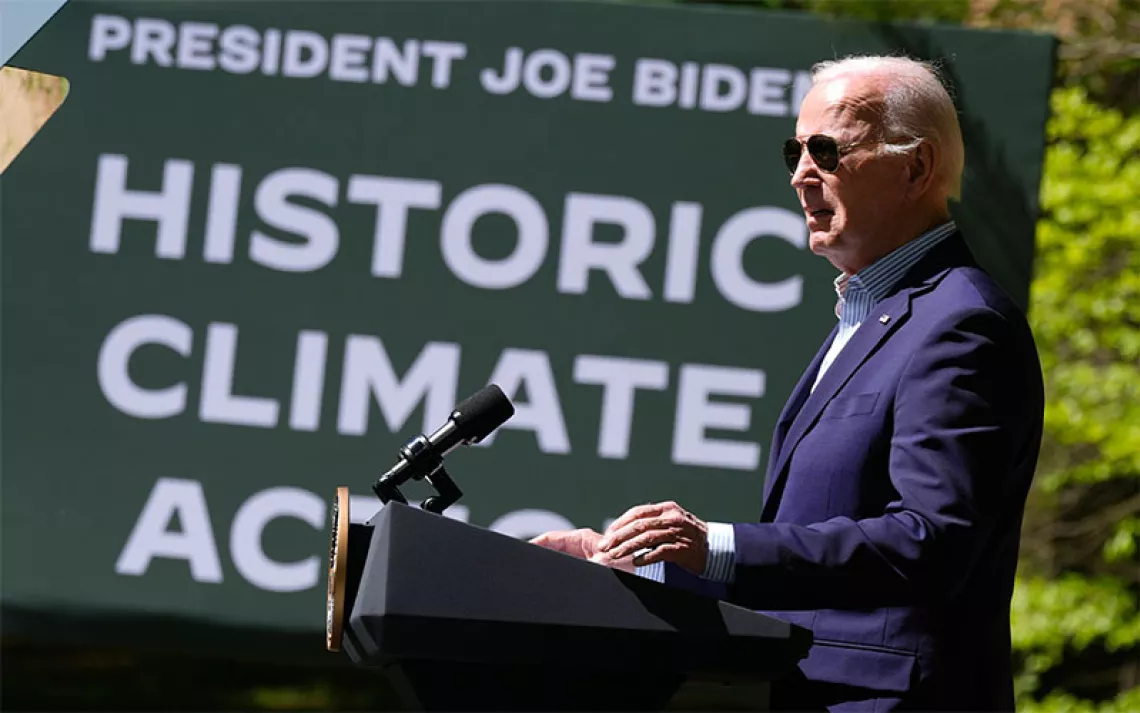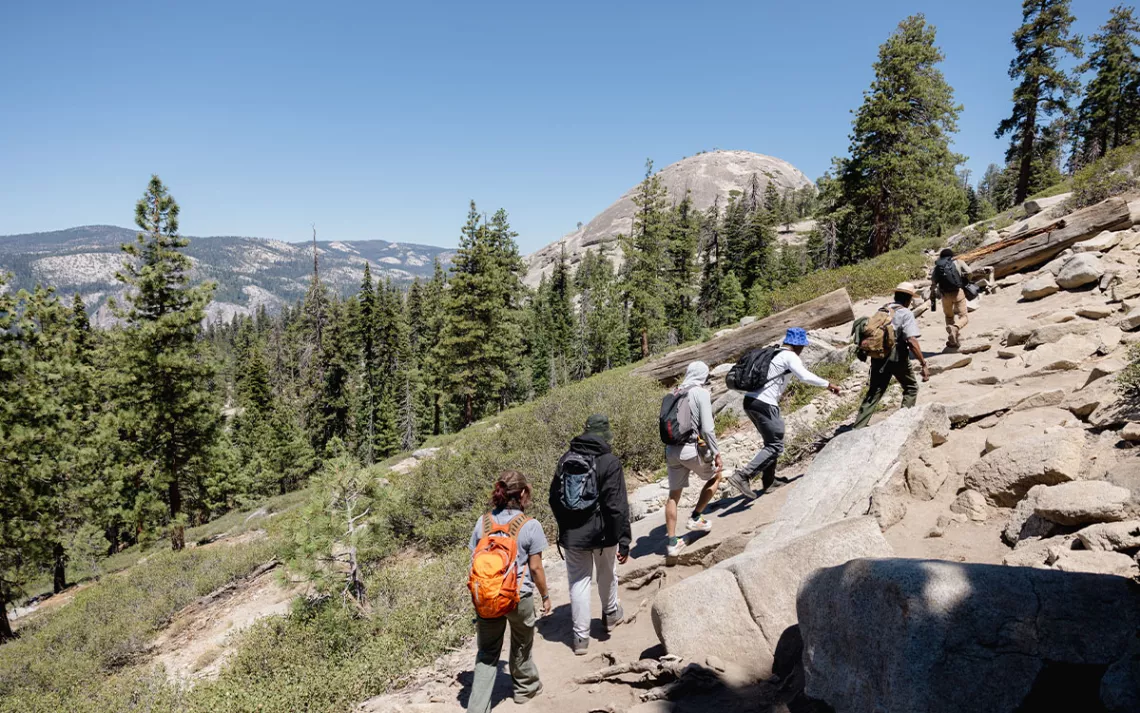Trump Slashes Two National Monuments in Utah
Native American nations and conservation groups vow to fight in court

Photo by Lemanieh/iStock
In an unprecedented move, President Donald Trump today announced his intention to dramatically downsize Bears Ears National Monument and Grand Staircase–Escalante National Monument, both located in Utah. Speaking before a crowd of supporters at the Utah capitol in Salt Lake City, Trump said, “I’ve come to Utah to take a very historic action, to reverse federal overreach and to restore the rights of this land to your citizens.” The president argued that “past administrations have severely abused the purpose, spirit, and intent of a century-old law known as the Antiquities Act” and vowed that his action would give greater control of public lands to people in Utah.
While at the Utah statehouse, Trump signed two presidential proclamations to shrink and divide the two existing national monuments. The president is attempting to reduce Bears Ears National Monument from 1.35 million acres to 228,000 acres—an 85 percent reduction—while splitting it into two pieces, an Indian Creek National Monument and a Shash Jáa National Monument. Grand Staircase–Escalante will be cut nearly in half, from 1.9 million acres to just over 1 million acres. It, too, will be divided, into three separate monuments: Grand Staircase, Kaiparowits, and Escalante Canyons.
Trump’s plan is by far the largest reduction of protected areas in U.S. history.
Conservation organizations and southwestern Native American nations immediately blasted Trump’s announcement and vowed to try to overturn the move in court, saying that it rests on flimsy legal reasoning.
“Today’s announcement is a disgrace," Sierra Club executive director Michael Brune said. "It’s an insult to tribal sovereignty, centuries of Latino heritage, and to people across the country who love and care about our great outdoors. Yet again the Trump administration has sold out the American people and our special places—all to benefit the fossil fuel elite."
“There was absolutely no consultation with the Navajo Nation, and we are greatly upset by that,” Ellen Branch, attorney general of the Navajo Nation, said at a December 1 press conference in anticipation of Trump’s announcement. “Ultimately, the president doesn’t have the authority for this move, and we are going to challenge him in court.” Other tribal nations and conservation organizations will likely sign on as co-plaintiffs.
The two desert monuments have been controversial since they were established—Grand Staircase–Escalante by President Bill Clinton in 1996 and Bears Ears by President Barack Obama in December 2016. Some Utah elected officials object to what they call an overreach of federal power. When introducing the president today at the Utah capitol, Senator Orrin Hatch said that Utah residents had been “blindsided” by President Obama’s designation of Bears Ears National Monument. Conservation groups and Native American nations say the monuments are essential to safeguarding biological and archaeological treasures. “By making commercial exploitation of these national treasures the top priority, this administration betrays the history of these sacred places, as well as their value as places for people to enjoy the outdoors and for wildlife to thrive,” Jamie Williams, president of the Wilderness Society, said.

Rally on December 2 at the Utah State Capitol in Salt Lake City to oppose President Trump's plan to reduce the size of the Bears Ears and Grand Staircase–Escalante National Monuments. | Photo courtesy Sallie Shatz
Speaking in Salt Lake City, Trump claimed that the national monuments had been created “by the whims of regulators thousands and thousands of miles away” and that the monument designations “prevented Native Americans from practicing their ancestral and religious traditions.”
In fact, Bears Ears was created after a years-long campaign by the Hopi, Navajo, Ute, Mountain Ute, and Zuni Pueblo nations, and was the first national monument to include a co-management agreement with Native American nations. In the lead-up to president Obama’s designation, the then interior secretary, Sally Jewell, held several town hall listening sessions in Utah, and a spring 2016 poll found that more than two-thirds of Utah residents were in favor of establishing a monument at Bears Ears. Contrary to Trump’s claims, Obama’s monument designation did not change any of the land-use rules around hunting, fishing, firewood gathering, or Native American religious ceremonies. According to leaked maps of the proposed monument reductions, the downsizing of Bears Ears would remove protections from Cedar Mesa, an area with one of the highest concentrations of pre-Columbian artifacts.
“This was the first national monument which the tribes truly led the effort to create,” said Natalie Landreth, an attorney with the Native American Rights Fund. “It’s an issue of tribal sovereignty.”
Clinton and Obama established the monuments under the Antiquities Act, the Teddy Roosevelt–era law that gives the president the authority to unilaterally protect landscapes and archaeological sites of unique value. Past presidents have made reductions in monuments created by their predecessors, but Trump’s move is unprecedented in its scope—and it's possibly illegal.
“The Antiquities Act of 1906 gives the president the authority to designate national monuments,” said Senator Tom Udall, a Democrat from New Mexico, at the Friday press conference. “It does not give the president the authority to reduce or revoke a national monument, and no one has that authority other than the U.S. Congress.”
In 1938, the U.S. Attorney General at the time, Homer Cummings, wrote an opinion stating that the Antiquities Act only gives the president the authority to establish national monuments, not to abolish them. And with the Federal Land Policy and Management Act of 1976, Congress reserved for itself the right to change existing monuments.
“No boundary adjustment has been attempted since then,” Senator Udall said. The Trump administration, he continued, is “in totally uncharted territory, and I don’t think they have any authority to do this.”
 The Magazine of The Sierra Club
The Magazine of The Sierra Club



